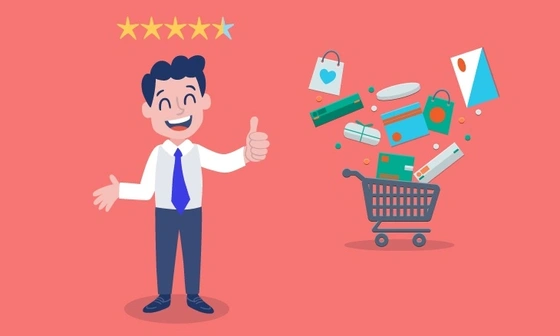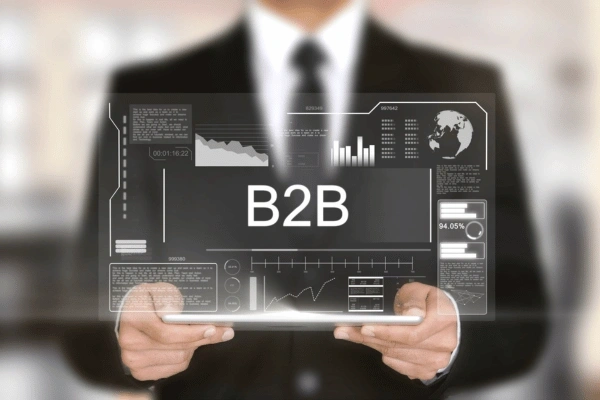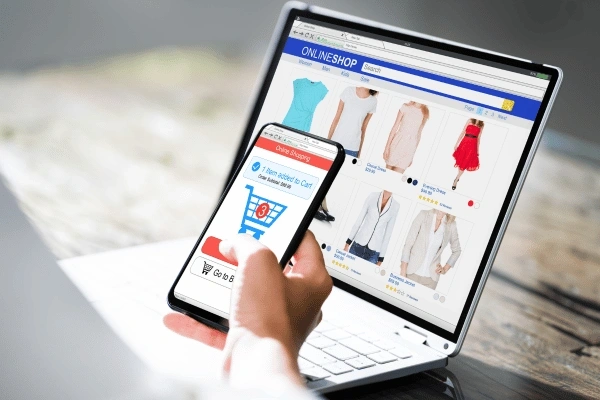The 7 types of customers every business should know
Published on January 08, 2024 - Updated on February 06, 2024
Understanding your customer base
Building a trusting relationship relies on a deep understanding of customer motivations. In this context, customer typology emerges as a segmentation tool aimed at mitigating potential risks of dissatisfaction or friction points.
In the modern business landscape, comprehending the diverse customer categories, from occasional buyers to loyal patrons and growth potentials, is paramount. Classifying customers or prospects into different types becomes essential for effective engagement, intending to craft tailored strategies for each customer throughout the sales process.
Customer types
There are several customer types, but here are four key ones:
Loyal customer
Loyal customers typically constitute less than 20% of the total customer base but can often contribute to over 60% of a company's sales.
Their loyalty is measured by frequent returns for products or services. Besides financial gains, these customers can evolve into brand ambassadors, initiating positive word-of-mouth. Continuously enhancing their experience and understanding what makes them perceive your offerings positively is crucial.
The major advantage of this customer category lies in their willingness to collaborate. Seeking direct opinions on potential improvements fosters conditions to transform other customers into ambassadors.

Potential customer
A potential customer is an individual who is not yet a client but has the potential to become one. A potential customer is generally referred to as a prospect. A prospect is a potential customer in the sense that their needs align with the products or services you offer. In a broader sense, you can consider anyone who has not made a purchase of your products in the last 12 months as a prospect.
This type of customer expects an unbiased demonstration of your ability to assist them. Before they make their decision, you need to provide them with value and make them feel secure with your offerings. They have already expressed interest in your business through lead generation methods, either because you have contacted them for a potential sale by phone or because they have subscribed to your mailing list on your company's website. When a prospect shows interest in your business, it becomes easier to convert them into a customer.

Occasional customer
The occasional customer is someone who uses your products or services from time to time. They are generally satisfied but don't fully engage in a relationship with your company. They can just as easily turn to a competitor if offered a more enticing deal.
This type of customer primarily seeks a good value proposition. They are highly responsive to promotions and special offers, provided they meet their expectations. It's crucial to pay attention to their buying habits and offer tailored promotions. Regular and personalized communication can also be highly effective in fostering loyalty.
While they are generally less profitable than loyal customers, they represent significant growth potential. With appropriate offers and services tailored to their needs and expectations, occasional customers can be converted into loyal ones.

Difficult customer
A dissatisfied customer is someone who has been disappointed by your company. These customers can be demanding, impatient, unpleasant, or simply difficult to please.
This type of customer is, of course, the most challenging to handle, but winning them back can be highly beneficial for your business.
Dissatisfied customers typically express their concerns through complaints or issues with various aspects of your business: product quality, delivery time, employee attitude, etc.
When dealing with a difficult customer, it's essential to listen to them, understand their problem, and offer a quick and satisfactory solution. The key is to demonstrate to the customer that their opinion matters, and that you are willing to make efforts to resolve their issue.
To win back a dissatisfied customer, you must go beyond merely resolving their problem. Surprise them by offering a more significant resolution than expected or providing a special offer for their next purchase. Be generous and show them that their satisfaction is your priority.

Inactive customers and their reactivation
An inactive customer generally refers to a customer who has not interacted with a company or its products/services for a defined period. Inactivity can vary according to the type of business but is generally measured in terms of weeks or months without activity.
However, an inactive customer is not necessarily lost, and there are often several ways to reactivate them.
Here are three common methods:
Personalized follow-up campaigns: Send personalized communications to inactive customers, such as e-mails, text messages, or push notifications, reminding them of the benefits of your products/services, special offers, or relevant updates. Use data on their purchase history or preferences to personalize these messages.
Special loyalty programs: Set up special loyalty programs or exclusive offers aimed at inactive customers. This could include discounts, gifts, exclusive benefits, or special promotions to entice them to return and make a new purchase.
Surveys and feedback: Send out surveys to understand why customers have become inactive. Direct feedback can provide valuable information on the reasons for their inactivity, whether due to a specific problem, dissatisfaction, or other factors. Use this information to make improvements and tailor your approaches to better meet their needs.
Business customers (B2B)
When we think of a particular type of customer, we tend to think of private individuals. However, business customers can represent considerable potential and are referred to as B2B customers.

What is a B2B customer?
A B2B customer, or business-to-business customer, refers to a company or organization that buys goods or services from another business rather than from an individual consumer. The acronym "B2B" stands for "Business-to-Business", which translates as "enterprise to enterprise". B2B transactions typically involve companies supplying products, services, or solutions to other businesses.
B2B customers can range in size from small businesses to large corporations. These transactions can cover a diverse range of sectors and needs, such as the supply of raw materials, the provision of professional services, the purchase of equipment, the distribution of products, and so on.
What's the difference between a B2B customer and a B2C customer?
In the B2B context, purchasing processes are often more complex, sometimes involving longer sales cycles, more in-depth negotiations, and longer-term relationships between business partners. B2B relationships can also be characterized by long-term contracts, high purchasing volumes, and specific requirements linked to the needs of the client company.
Understanding these nuances is essential to a personalized approach. Offer them solutions tailored to their specific needs, and provide dedicated technical support to strengthen the customer relationship.
Online vs. offline customers
An offline customer generally refers to a customer who interacts with a company or purchases products/services without using the Internet. This may include face-to-face transactions in physical stores, telephone interactions, or other traditional offline channels. In contrast, an online customer interacts and transacts primarily via the Internet, whether on a website, mobile app, or other online platforms.
Here are three distinct strategies for reaching these two types of customers more effectively:
Strategies for reaching offline customers :
Localized marketing: Focus on location-specific marketing strategies to attract customers in specific geographic areas. Use tactics such as local advertising, community events, partnerships with local businesses, and targeted promotions.
In-store experience: Optimize the in-store experience to deliver exceptional customer service. Make sure your staff is well-trained and able to assist customers in a personalized way. Offer exclusive in-store promotions and create a welcoming atmosphere to encourage repeat visits.
Offline loyalty programs: Set up loyalty programs that reward customers for their in-person purchases. Physical loyalty cards, paper coupons, and special in-store discounts can encourage customers to choose your company over an online option.
Strategies for reaching online customers :
Website and application optimization: Make sure your website and applications are user-friendly, well-designed, and optimized for search engines. Use search engine optimization (SEO) strategies to improve online visibility, and invest in targeted online advertising.
Social networks and digital marketing: Actively engage on social networks relevant to your business. Use digital marketing, including paid advertising on social networks, to reach your online audience effectively. Create compelling content to generate interest and engagement.
Personalization and online tracking: Use online tracking tools to understand customer behavior and personalize your offers accordingly. Personalized e-mails, recommendations based on purchase history, and special offers tailored to individual preferences can increase the effectiveness of your online interactions.

The distinction between online and offline customers is crucial in today's commercial landscape. By combining these approaches, a company can maximize its reach and efficiency, reaching both online and offline customers in ways that are tailored to their preferences and buying behaviors. Ensure that the customer experience is seamless and consistent, whatever the channel used, and offer both online and offline customer service options to meet their needs.
In summary, understanding the various customer categories is essential for any business aiming to establish lasting and fruitful relationships. Whether you're interacting with loyal customers, potential, occasional, or even dissatisfied customers, each interaction shapes the perception of your company.
Explore how our innovative solutions can transform your customer relationships by visiting our website: https://www.qemotion.com/en/.
Similar posts
How to calculate customer retention rate ?
Published on January 04, 2024 - Updated on January 09, 2024
How to calculate customer retention rate ? "There is only one boss in the company: the customer! And he can fire anyone, from the CEO to the simple employee, just by spending his money elsewhere." - ...
The impact of artificial intelligence (AI) on the financial sector
Published on November 30, 2023 - Updated on December 05, 2023
The impact of artificial intelligence (AI) on the financial sector The financial sector has undergone more transformations in the past two years than in the previous two decades, with digital transfo...